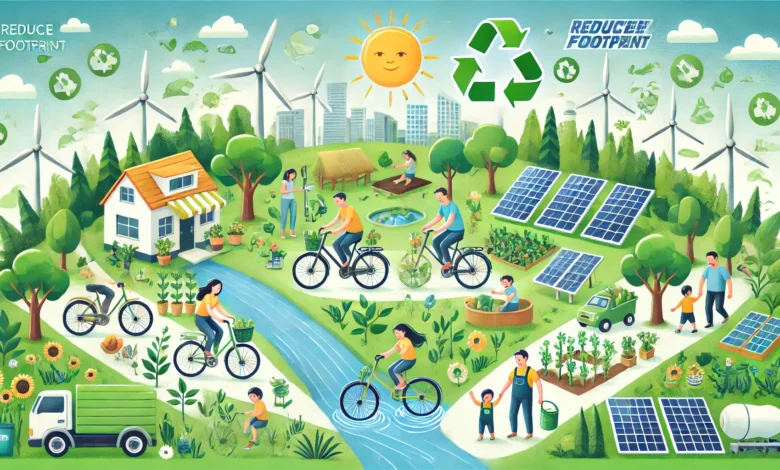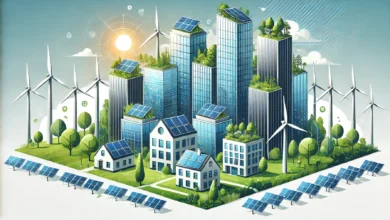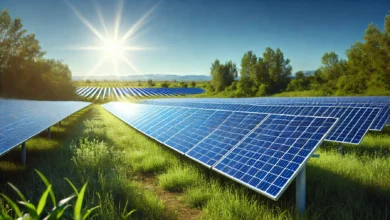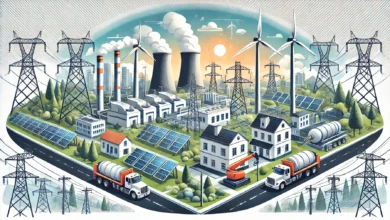Top 20 Ways to Reduce Your Carbon Footprint

Making more sustainable lifestyle choices does not have to feel like a huge effort. Small choices made over time can have a real impact on your individual carbon footprint. This is a comprehensive list of 20 actions that you can take that are realistic for you to begin today.
Contents
- 1 1. Switch to Renewable Energy Source
- 2 2. Use Your Car Less
- 3 3. Drive Efficiently
- 4 4. Think About Getting an Electric Vehicle
- 5 5. Eat Less Meat and Dairy
- 6 6. Purchase Food That is Locally Produced
- 7 7. Minimize Food Waste
- 8 8. Enhance Your Home with Insulation
- 9 9. Purchase Energy-Efficient Appliances
- 10 10. Install a Smart Thermostat
- 11 11. Use LED Light Bulbs
- 12 12. Be Water Wise
- 13 13. Line Dry Your Laundry
- 14 14. Be a Minimalist
- 15 15. Choose Sustainable Materials
- 16 16. Offset Your Carbon Emissions
- 17 17. Advocate for Climate-Respecting Policies
- 18 18. Recycle Properly
- 19 19. Support Companies that Engage in Green Initiatives
- 20 20. Educate Others
- 21 Frequently Asked Questions (FAQ)
1. Switch to Renewable Energy Source
If your utility offers a green energy option, choose it! Solar, wind and hydro energy can drastically reduce your reliance on fossil fuels. If you are interested in learning about options, check out our guide: Ways to Power Your Home with Renewable Energy.
2. Use Your Car Less
Whenever you can walk, bike or take public transport, do that. Carpool also helps emission numbers to go down.
3. Drive Efficiently
Practices such as driving at a fairly steady rate of speed or even keeping your tires properly inflated can increase overall fuel efficiency by as much as 15%.
4. Think About Getting an Electric Vehicle
Electric cars are now very affordable and widely available. Do your research and check out your federal and state incentives to help relieve some of the costs.
5. Eat Less Meat and Dairy
Animal agriculture helps significantly contribute to worldwide emissions. Even just having one or two vegetarian days per week makes a significant difference.
6. Purchase Food That is Locally Produced
Food that is produced locally has less distance to travel and less emissions in transport. Farmers’ markets are a great way to find local produce and products!
7. Minimize Food Waste
Plan meals, store food properly, and compost scraps whenever possible. Waste reduction preserves the resources used to produce food.
8. Enhance Your Home with Insulation
Insulation ensures that less heating or cooling is needed. This saves energy.
9. Purchase Energy-Efficient Appliances
When you purchase appliances look for Energy Star certification. Energy Star products use much less electricity over their lifespan.
10. Install a Smart Thermostat
Smart thermostats can make scheduling heating and cooling much easier so that you can save energy without sacrificing comfort.
11. Use LED Light Bulbs
LED bulbs use 75% less energy than incandescent bulbs and can last significantly longer.
12. Be Water Wise
Fix faucets with leaks, install low-flow fixtures, and keep Practical Water Conservation Methods You Can Start Today in mind. Conserving water also conserves energy indirectly.
13. Line Dry Your Laundry
Dryers are a significant energy waste. Line-drying clothes can save you hundreds of pounds of carbon emissions every year.
14. Be a Minimalist
Having better quality, fewer items uses less resources and creates less waste. Just focus on what you need—not on impulsively wanting.
15. Choose Sustainable Materials
Choose items made of recycled or sustainably sourced materials. Every purchase is a vote for how products are made and sourced.
16. Offset Your Carbon Emissions
If you fly a lot or put a lot of miles on your vehicle, consider investing in certified carbon offset programs.
17. Advocate for Climate-Respecting Policies
Use your voting and purchasing power to choose leaders and initiatives that promote renewable energy, conservation, and sustainability.
18. Recycle Properly
Know your local recycling rules. Don’t “wish-cycle,” throwing non-recyclables in the recycling bin and hoping it will be processed.
19. Support Companies that Engage in Green Initiatives
Choose brands that are sustainable in their production, packaging, and logistics.
20. Educate Others
Share your journey with family and friends. The more awareness you bring, the more potential collective impact we can have.
Frequently Asked Questions (FAQ)
How can I quickly reduce my carbon footprint?
Take the easy steps first like using renewable energy sources, eating less meat, and driving less—these will all make a more immediate impact.
Does flying really count when assessing my carbon footprint?
Yes. Air travel is among the single highest carbon emissions by an individual. Only travel with direct flights, offset the emissions when you travel, or consider alternatives to flying.
Is eating plant-based the biggest impact I can make?
It’s one of the biggest. Transitioning to a primarily plant-based diet can reduce the carbon footprint related to your food by up to almost 50%.
How substantial is energy efficiency in the home?
Very. Adequate insulation, efficient appliances, and smart thermostats can help cut your household emissions by 20–30%.
Are individual actions enough?
Systemic change is important, but our individual actions create demands for better policies and greener markets. Everything we do matters.



